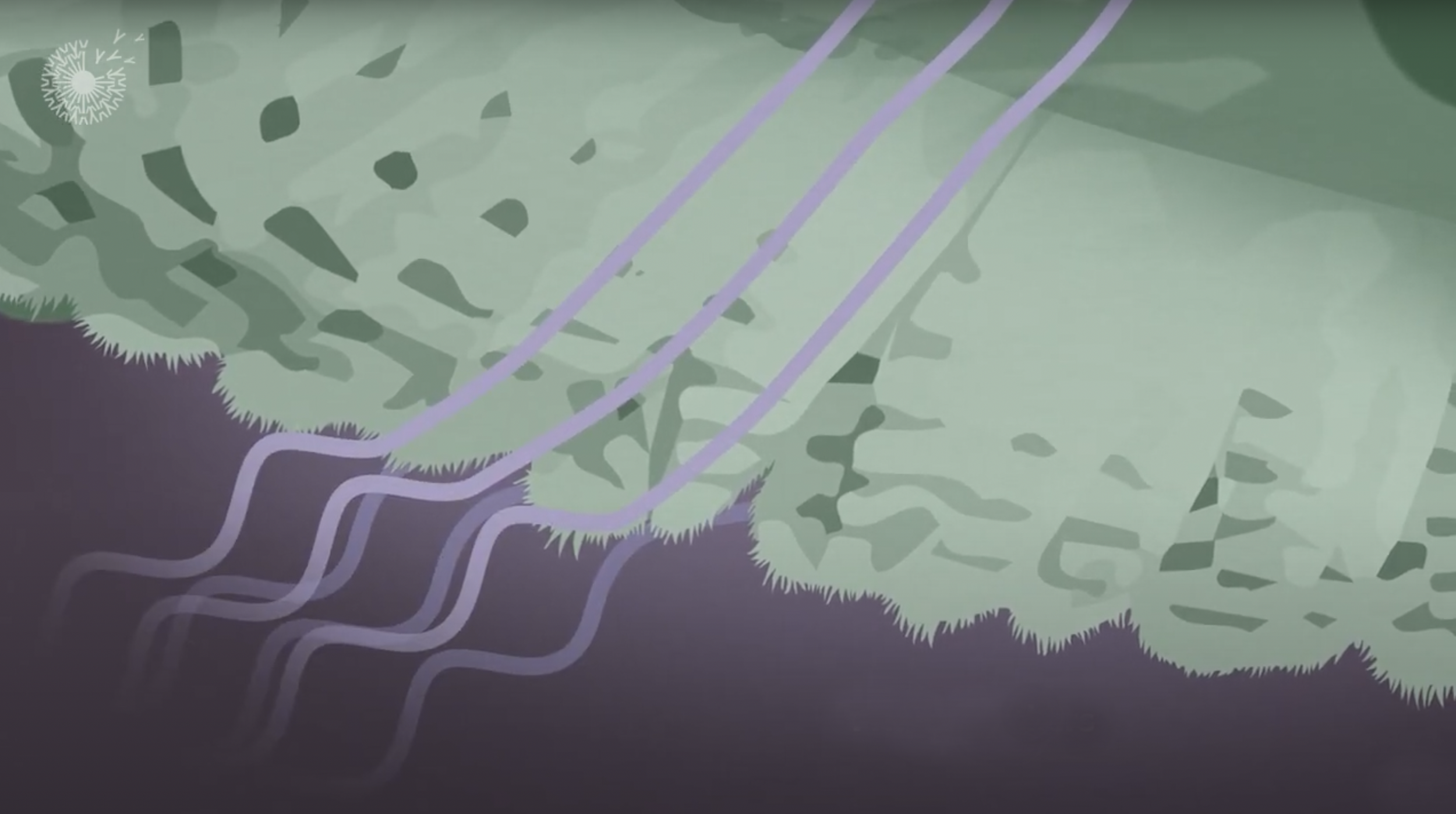Quietly powerful serration
technology for your turbines.
Silence is Power ™
When air moves, it makes noise. By adjusting turbine blade aeroacoustics, FeatherEdge technology directs air flow to mix at discrete locations to reduce noise emissions and improve turbine performance, benefits appreciated by operators, regulators, and the local community.
Schierloh Engineering GmbH.
Hämelhausen, Germany
The Sound of Wind
Noise from wind turbines has two sources: mechanical noise from the drivetrain and aerodynamic noise from the blades. The aerodynamic noise from wind turbines in operation is the predominant source, and occurs along the trailing edge of the blade. That's where air mixes rapidly from the pressure and suction sides of the blade, creating rapid pressure change. This is known as turbulent boundary layer - trailing edge noise (TBL-TE noise) and represents the main cause of noise that humans can detect.
Whisper Quiet
Inspired by the design of the owl's silent flight, Biome's FeatherEdge serration technology addresses the challenge of TBL-TE noise by applying our patented double-dip serration to the trailing edge.
By utilizing a novel technique of phase interference - a first for the industry - FeatherEdge doesn't just cut the noise, it specifically targets low frequency long range aspects of the noise spectrum, pushing sound energy to higher frequency bands, reducing amplitude modulation and dramatically limiting impact to the local surroundings. Highly engineered passive adaptive functionality further allows for improvements in the aerodynamics and power curve, all within structural turbine limitations and certifications.
Assured Silence
Biome is conducting FeatherEdge projects with customers in North America and Europe. If you are interested in experiencing for yourself how FeatherEdge reduces noise and improves performance, get in touch.

Channel power back to your turbine
Introducing a historic advancement in wind turbine acoustics. FeatherEdge has been shown in 3 separate independent IEC measurements to reduce the overall Sound-Power-Level (SPL) by at least 2-3 dB(A) (IEC) across a range of turbines from 92-160 meters rotor diameter.
sound power levels beyond standard serrations by up to:
2-3
REDUCE
dB(A)
IEC ed. 3 Near-Field Measurements
REALIZE
sound power levels beyond standard serrations by up to:
dB(A)
ISO 9613-2 Far-Field Measurements,
500m - 1500 m, 4.5m receptor
3-5
AVOID
production losses which average 3-5% production for every 1dB(A) of noise.

A Powerful Difference
Shrink your wind farm's footprint or grow your installed capacity - these are some of the benefits that FeatherEdge can offer. On average, developers can add 20-30% more capacity in the same land usage due to quieter turbines.
Use the slider below to observe the measurably different noise contours model of a wind farm featuring 14 of the same spec turbine, with and without FeatherEdge applied.
With FeatherEdge, neighbours will be exposed to less noise, increasing acceptance and chances for a successful planning permission. Alternatively, the layout could be re-arranged to add several additional turbines while maintaining the legal limits for noise.
Noise impact contours at 4.5m receptor height
Improve your Business Case
Add up to 10-15% yield on average to your Wind Farm
Create compliance for turbines which currently exceed permitted noise levels, removing power-reduced noise modes or even shut-downs.
1
Change from noise and power reduced mode(s) to higher or normal operational mode for turbines currently in compliance by using the additional “noise budget” provided by FeatherEdge.
2
Retrofit existing wind farms where you are not running in any noise-reduced modes, but where the additional “noise budget” provided by FeatherEdge can then be used to add additional turbines. In this way, as land leases and a grid connection is in place already, there is minimal cost in using / sharing existing infrastructure and grid connection. This also allows you to develop neighbouring greenfield sites.
3
Repower existing wind farms, which gives you greater turbine selection flexibility and overall MWh production.
4
5
Increase turbine density in greenfield development, with operation in higher or normal mode(s), including optimization of all available modes.
More wind turbines, more AEP and better economics for new wind farms. Improve your overall AEP and business case back to or above original predictions. Imagine a new wind farm area, noise fenced by surrounding farms and villages. Instead of installing, for example, ten turbines with 107 dBA sound power level, it could be possible to install twelve or even thirteen turbines with 105 dBA sound power level – thanks to having FeatherEdge installed. In some cases, it makes or breaks the business case.
6
The best comes last:
On top of a noise reduction of 2-3 dB(A) of the sound power level, a measurable yield improvement is expected while keeping loads within certification compliance – all without changing the control settings. This is due to improved rotor blade aerodynamics, and makes adoption easy and seamless.
A TÜV report on yield and loads impact with site-specific values will be available in some coming weeks. This means that even for wind turbines and wind farms without noise issues, FeatherEdge will improve your business case – onshore and offshore.
FEATHEREDGE DOWNLOADS
FeatherEdge technical brochure Deutsch >
FeatherEdge technical brochure English >
FeatherEdge FAQ English >
FeatherEdge FAQ Deutsch >

















